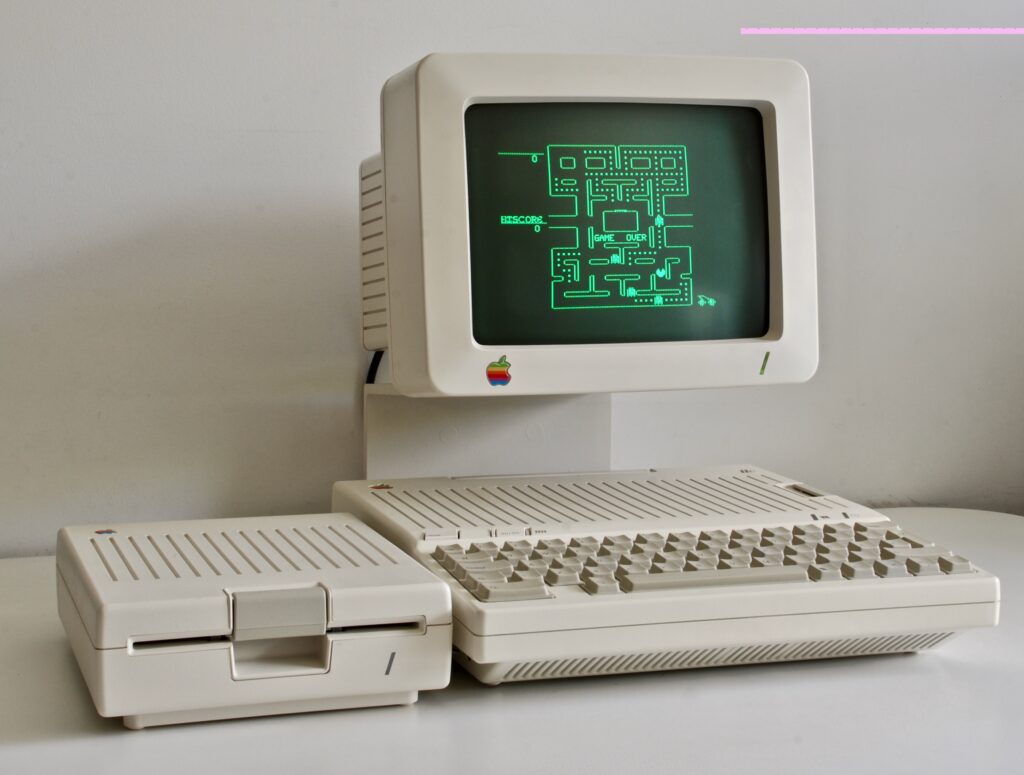

But the Macintosh delivered on Apple’s original vision. Lisa was the forerunner of the Macintosh, and it was advertised with Lisa as one family when it was launched. In fact, Macintosh revolutionized the computing industry and the entire world.Īll along, Apple had a vision of a low-cost, easy-to-use computer for the ordinary consumer.
APPLE COLOR PLUS 14 DISPLAY SOFTWARE
It also featured other software programs such as MacWrite (Word processor) and Mac Paint (graphics program). The Macintosh had 64KB of RAM and could support a 256X256 pixel black and white bitmap display.
APPLE COLOR PLUS 14 DISPLAY PC
The first Macintosh was unveiled on January 24, 1984, becoming the first commercially successful PC to feature GUI (graphical user interface), a mouse, and an operating system (System 1, the earliest type of Mac OS). It wasn’t the success of the Apple II, though, and it was discontinued in 1982. When it was released it was retailing at $1200. It came with 48 kb of RAM that was expandable to 64 KB using a language card. It was similar to the original Apple II but had additional features such as better graphics and disk booting capability. In 1979, Apple II Plus was released as the second model of the Apple II series. It eventually became the first successful mass-produced microcomputer. When it was released in 1977, Apple II was retailing at $1,298. It had numerous upgrades from the previous model, including a case, an integrated keyboard, and expansion slots for floppy disks, among other components.Īpple II became the first personal computer targeting the consumer market as opposed to business or computer hobbyists. It came with 4KB of RAM and could be hooked to a cassette tape recorder and a TV. Apple IIĪpple II was released in 1977, and it ran at 1 MHz and an 8-bit bus using an 8-bit microprocessor. It was made up of a single motherboard and fully pre-assembled chips, and the motherboard was made to support CRT TV. The user needed a cassette tape to save the data, which was the precursor of the floppy disk. To make a working computer, consumers needed a power supply transformer, a case, an ASCII keyboard, a power switch, and a video display.Īpple I had a 6502 processor running at 1MHz and 8KB memory. Computers at the time were sold as kits, but Apple I was a completely assembled board. It had no case, keyboard, sound, or graphics. This model was essentially a circuit board. In total, 200 units of Apple I were made. The first 50 units were sold to a local computer store. The first Apple computer, the Apple I, was sold in 1976 for $666.66. Since the release of the first computer, the company has evolved over the years to provide cutting-edge electronic gadgets for creative enthusiasts, educators, scientists, developers, businesses, and the general public around the world. Colour graphics set the Apple II apart from its rivals on the market.The first Apple computer went on sale in 1976 and was designed and hand-built by Steve Wozniak. Steve Jobs added the colours to the logo to reflect the Apple II’s superior colour output.

Apple II – 1977ġ977 saw the invention of both the Apple II and the famous rainbow Apple logo. Although some models were classified as All-In-One, they had separate monitors packaged in the same box. We chose to highlight those products where the design changes are best appreciated.Īpple has sold “all-in-one” computers that have built-in monitors from its very early days. The list compiled for this article is by no means a complete compilation of all Apple products. Whether or not their inventions were accepted by the marketplace, Apple has consistently put out products that raise the bar for the computer and telecommunications industry. Most have been notable leaps forward, while some were famous flops. With the 25th anniversary of the first Macintosh computer coming up on January 24th, 2009, we’re taking a look back in time at the evolution of Apple products.


 0 kommentar(er)
0 kommentar(er)
